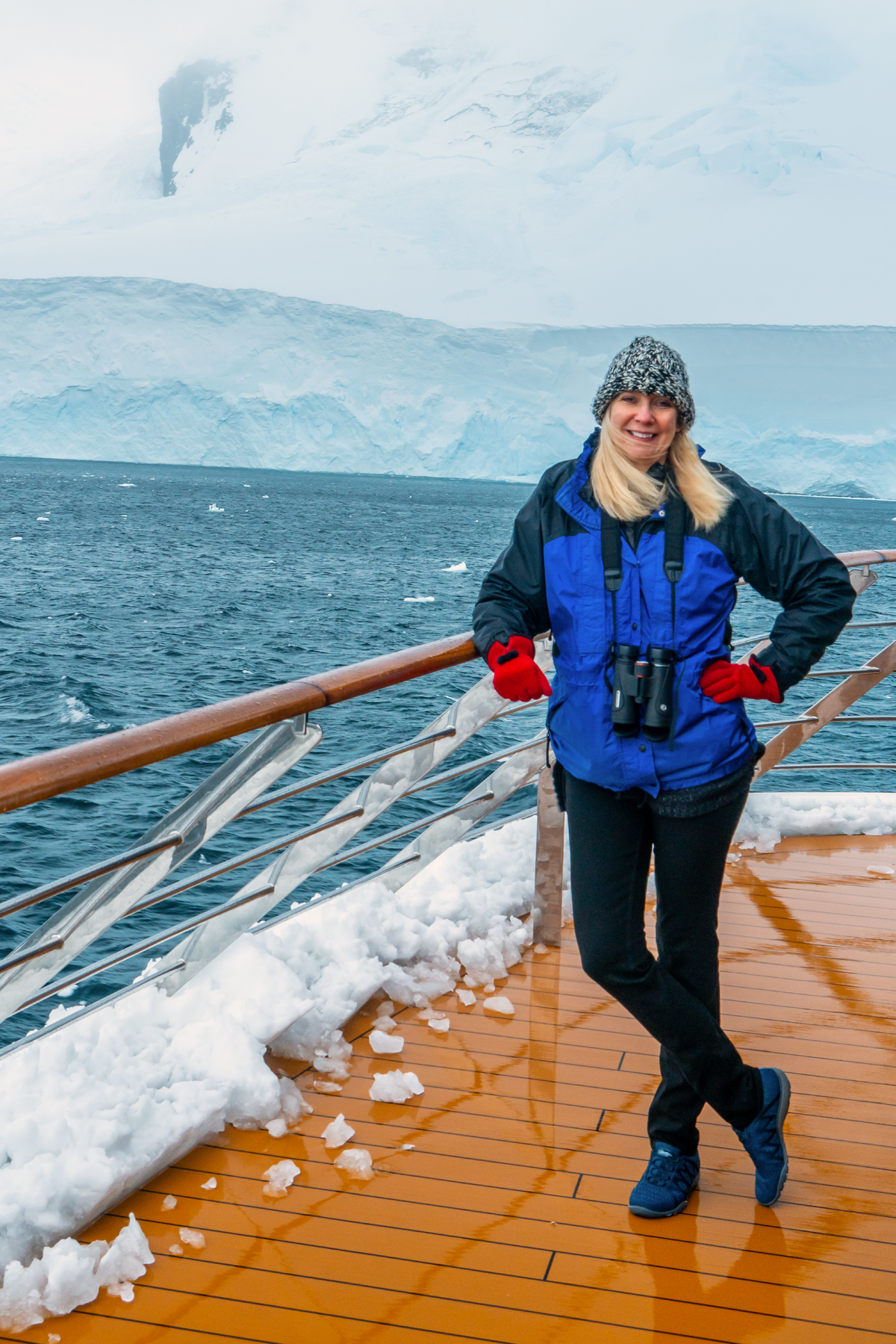Sharing travel, architecture, nature, and underwater photography with friends and family.
Blog Archive
Wednesday, March 15, 2023
Antarctica: Second and Third Gentoo Penguin Colonies
Friday, March 10, 2023
Antarctica: Gentoo Penguin Colony
Our penguin colony excursion was amazing, if eye-watering. We could smell it from the Zodiac long before we landed. Once we arrived on shore, you simply had to try to block it out of your mind, which wasn't always easy. Happily, the sounds and activities all around made for compelling distractions. Parent and chick below. I wouldn't say "mother and chick" because the mother and father share responsibilities for the chick. They alternate minding the chick and going for food.
This is how the colony looked as we approached. The hard blue ice of the glacier, exposed by wind, fractures, and melting, can be seen in the back. The middle ground is snow with red and yellow algae growing in it, while the penguins are perched mainly on the black bedrock in the foreground.
A couple of short videos of whales diving.
That's it for the first penguin post!
Tuesday, March 7, 2023
Antarctica: Through the Gunnel and Gullet
The night after the storm, the ship turned north to pass through The Gunnel and the Gullet. These are two narrow channels between Adelaide Island and the Antarctic continent. They're often blocked by sea ice or icebergs, but we were fortunate to be able to get through. This meant the ship was close to icebergs and glaciers on both sides at times. One of the expedition staff explained that the ship had access to up-to-date satellite photos of the area to check if there were too many icebergs before venturing in that direction.
I can't get over these two-hundred foot towers of ice that looked like they could fall at any minute. Towers of glacier ice like this are called "seracs", but usually they're the size of houses, not office buildings. I love the way the ice looks like it's been sliced perfectly smoothly just to the right of the seracs, as if by a giant with a knife. It's amazing how the slight blue tint in the cracks is intensified by blue reflecting on blue.
I loved being so close to the glaciers and icebergs. Here's Jennifer with a giant glacier behind her, with snow on the deck from the night before.
Thursday, March 2, 2023
Antarctica: Northbound Between Adelaide Island and the Antarctic Peninsula
After being buffeted by hurricane force winds all night south of Adelaide Island off the coast of the southern Antarctic Peninsula, the ship turned north, searching for, but failing to find, anywhere with mild enough winds to allow us to go on a Zodiac excursion. We just continued heading north all day.
Icebergs are like natural sculptures to me. Each tells a story of how it came to have its shape. This one has been melting and getting smoothed out for a long time, but it fractured more recently, exposing sharp edges again. These icebergs are so large, and the air and water here is so consistently near or below freezing, they can take years to melt.
If the photos are too large to fit on your monitor, you can click any one for a popup gallery, and scroll with left and right arrow keys.

Many more photos to come, but this was a great day. I promise there will be penguins eventually!
Click here to see my first set of Antarctica photos, including the storm video.
Click here for the third set of Antarctica photos, with more stunning icebergs and glaciers.
Click here for the the fourth set - penguins, penguins, penguins!
Popular Posts
-
For our first hike in the Pyrenees, we chose "La Breche de Roland", which means Roland's Breach, a giant gap in the top of the...
-
This is sort of random, but the unexpected is what makes travel fun, as long as it's not bad unexpected. When we arrived at Port Pollen...
-
After hiking in and around the Cirque de Gavarnie in the French Pyrenees, we drove to Torla in the Spanish Pyrenees. Torla is the town just...
-
Sicily's Villa Romana del Casale is a remnant of a time when Rome dominated Sicily, and the economy was booming with exports of wheat an...
-
My friend Eduardo lives in Curitiba, Brazil. Eduardo is a great photographer. Last January, he sent me an amazing photo of a jaguar he took ...
-
Three feet of snow were forecast the night we arrived at our hotel in Cortina de Ampezzo, high in the Dolomite mountains north of Venice. W...
-
This is my second set of Bastille Day photos from last Friday night. A lot of people seemed to like the first set . As usual, the firewo...
-
This is the third in a series of gallery posts from our five day, hut-to-hut snowshoe trip in the Dolomite Mountains (they call them the Dol...
-
After a couple of days enjoying the views of the lake, the mountains, and the tiny towns around Lake Como, we headed down to Milan. For som...
-
Jennifer was so proud of herself at the bar yesterday afternoon. We were sitting outside, having our Belgian Leffe beers, in the bright sun...




















.jpg)











































